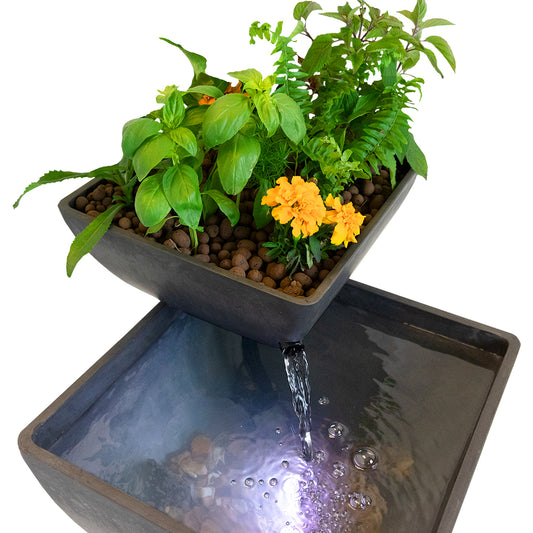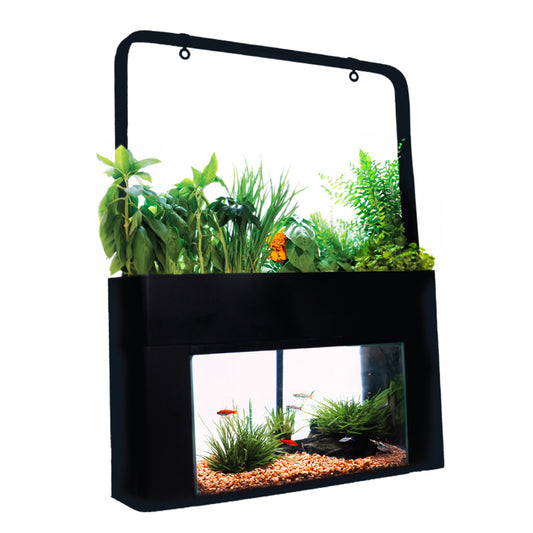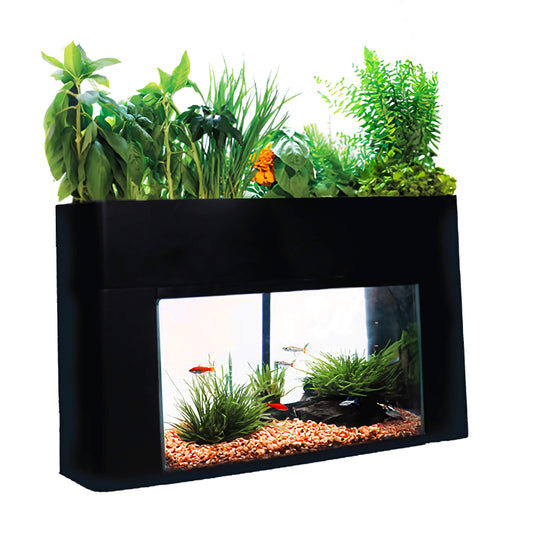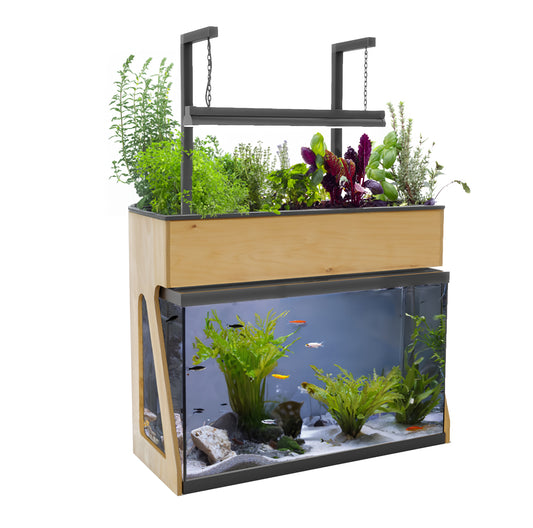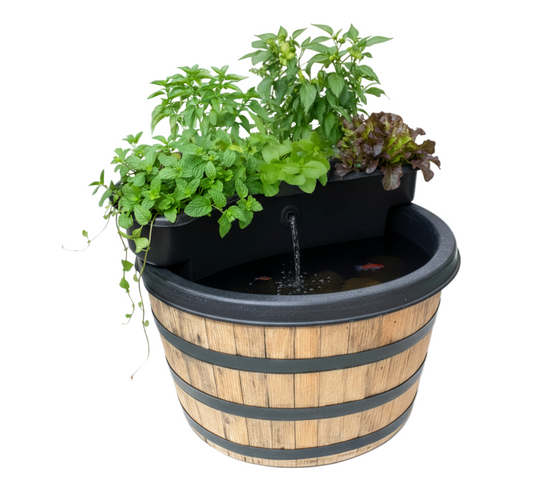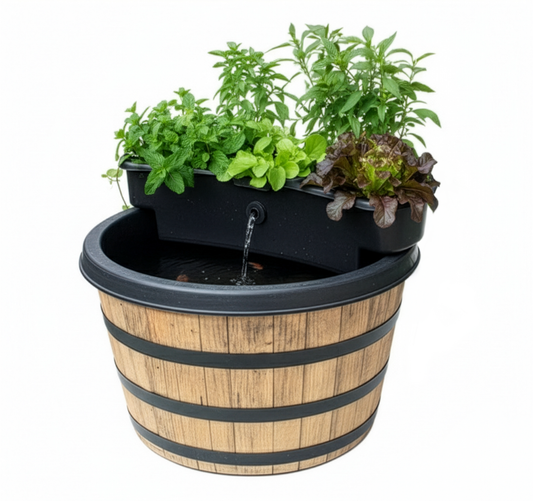Quantum Science Meets Aquaponics: Revolutionizing Sustainable Farming for the Future

Quantum Coherence in Photosynthesis
One of the most compelling discoveries in quantum biology is the role of quantum coherence in photosynthesis. Plants, algae, and certain bacteria utilize light-harvesting complexes to capture sunlight and convert it into chemical energy. Studies have revealed that these complexes exploit quantum coherence—a phenomenon where particles exist in multiple states simultaneously—to transfer energy with near-perfect efficiency.
In traditional farming or aquaponic systems, maximizing photosynthesis is essential for plant growth. However, environmental factors such as light intensity, quality, and duration often limit this process. By understanding and potentially manipulating quantum coherence in plants, scientists could engineer crops that thrive under suboptimal lighting conditions, such as low-intensity artificial light commonly used in indoor aquaponics setups.
For example, imagine aquaponic systems equipped with tailored LED lighting that complements the quantum properties of engineered plants, maximizing energy transfer and boosting growth rates. This innovation could make aquaponics even more viable in urban areas, where access to natural sunlight is limited.
Quantum Tunneling and Enzymatic Reactions
Quantum tunneling, another key phenomenon, allows particles to pass through energy barriers that would be insurmountable under classical physics. This effect has been observed in enzymatic reactions, where it enables faster and more efficient chemical transformations.
In aquaponics, enzymatic reactions are crucial at multiple levels:
- Fish metabolism: Efficient digestion and waste production depend on enzymatic processes.
- Nutrient cycling: Microbial communities in the biofilter rely on enzymes to convert fish waste into nitrates, a form of nitrogen that plants can absorb.
- Plant growth: Enzymes regulate nutrient uptake and assimilation in plant roots.
Harnessing quantum tunneling to optimize these reactions could lead to faster nutrient cycling and healthier ecosystems. For instance, aquaponic systems might one day use bioengineered bacteria with enhanced quantum efficiencies, ensuring quicker breakdown of fish waste and more consistent nutrient availability for plants.
A Quantum Leap in Crop and Microbe Engineering
The potential applications of quantum biology in aquaponics extend far beyond basic optimization. By engineering plants, fish, and microbial communities to exploit quantum effects more effectively, scientists could create "super-organisms" tailored for aquaponic systems. These organisms might exhibit traits such as:
- Enhanced photosynthetic efficiency
- Faster nutrient absorption
- Improved resilience to environmental stressors
Such advancements could redefine what’s possible in sustainable farming, enabling higher yields with fewer resources—a critical step toward addressing global food security.
Exploring Quantum Coherence in Water
Water is the lifeblood of aquaponic systems, serving as the medium for nutrient transport, waste removal, and biological interactions. While water’s role in these processes is well understood at the macroscopic level, its behavior at the quantum level remains an area of active research. Understanding and leveraging quantum coherence in water molecules could unlock new possibilities for enhancing aquaponic efficiency.
What Is Quantum Coherence in Water?
Quantum coherence in water refers to the synchronized behavior of water molecules at the quantum level. This phenomenon affects the formation and breaking of hydrogen bonds, which are responsible for many of water’s unique properties, including its ability to dissolve nutrients and facilitate biochemical reactions.
In aquaponics, nutrient availability and transport depend heavily on water’s chemical properties. If quantum coherence influences how nutrients dissolve and interact within the water, it could have profound implications for:
- Nutrient solubility: Ensuring that essential nutrients like nitrates, phosphates, and potassium remain bioavailable for plant uptake.
- Transport efficiency: Enhancing the movement of nutrients to plant roots and microbial biofilms.
Manipulating Water’s Quantum State
Recent experiments have shown that electromagnetic fields and other external stimuli can influence water’s molecular structure and, potentially, its quantum coherence. In the context of aquaponics, this raises exciting possibilities:
- Electromagnetic Treatments for Water: Systems could be developed to treat water with specific electromagnetic frequencies, optimizing its structure for nutrient transport and absorption. Such treatments might also improve water’s ability to support beneficial microbial activity, leading to healthier ecosystems.
- Custom Water Formulations: Aquaponics operators could tailor water treatments to suit specific plant and fish species, enhancing growth and productivity. For example, crops with high potassium requirements might benefit from water with optimized solubility for potassium ions.
- Disease Resistance: Manipulating water’s quantum properties could also improve its ability to resist pathogen colonization, reducing the need for chemical treatments and making aquaponics even more sustainable.
While the idea of manipulating water’s quantum state may sound like science fiction, researchers are already exploring practical applications. In aquaponics, implementing such technologies could lead to measurable improvements in plant growth, fish health, and system efficiency. For instance, growers might observe faster root development, higher crop yields, or reduced water consumption—all of which contribute to the long-term sustainability of aquaponic farming.
Broader Implications for Farming and Beyond
The intersection of quantum science and aquaponics is more than just an academic curiosity—it has the potential to redefine agriculture as we know it. By applying quantum principles to optimize biological systems and water chemistry, we could achieve breakthroughs that ripple far beyond aquaponics.
A Model for Sustainable Agriculture
Aquaponics already represents a sustainable alternative to conventional farming, using less water and producing minimal waste. Integrating quantum technologies could amplify these benefits, making aquaponics an even more attractive solution for:
- Urban farming, where space and resources are limited
- Developing regions, where access to fertilizers and clean water is scarce
- Climate-resilient agriculture, capable of withstanding extreme weather conditions
Impacts on Global Food Security
As the global population continues to grow, finding efficient ways to produce food will become increasingly critical. Quantum-enhanced aquaponics could play a key role in addressing this challenge, enabling higher productivity with lower environmental impact. The controlled, closed-loop nature of aquaponics makes it an ideal candidate for space farming. Incorporating quantum technologies would enhance the efficiency and adaptability of these systems, supporting long-term missions to the Moon, Mars, and beyond.


